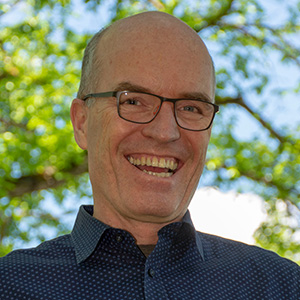Peacock Medal to Dr. Thomas Stachel
17 September 2021

The Peacock Medal is awarded to a scientist who has made outstanding contributions to the mineral sciences in Canada. There are no restrictions regarding nationality or residency. The medal is intended to recognize the breadth and universality of the scientist’s contribution to mineralogy, applied mineralogy, petrology, crystallography, geochemistry, or the study of mineral deposits, rather than in a narrow area of expertise. The Peacock Medal is the highest award bestowed by the Mineralogical Association of Canada (MAC) and is named in honour of late Professor Martin A. Peacock (1898–1950), a professor of mineralogy at the University of Toronto from 1937 until his untimely death in 1950.
This year’s awardee is Dr Thomas Stachel, a professor in the Department of Earth and Atmospheric Sciences at the University of Alberta (Canada) whose main research area is diamond geology. Thomas was born and educated in Germany. Studying geology at Gutenberg University in Mainz (Germany), he became very interested in volcanology, and for his MSc thesis he worked with Georg Büchel on a geophysical investigation of the (then-termed) Tertiary maar diatremes in the Eifel Volcanic Field. For his PhD (1987–1991), Thomas joined the research group of Volker Lorenz at Würzburg University (Germany) and studied the diamondiferous Ellendale lamproites of Western Australia. Attending the 5th International Kimberlite Conference in Araxá (Brazil) in 1991 and experiencing the unique community of academics and industry geologists in that field got him hooked on mantle, kimberlite, and diamond research. A postdoctoral project on the Gross Brukkaros Caldera in Namibia still kept Thomas largely in the field of volcanology. With a Marie Curie Fellowship of the European Union, he then joined Jeff Harris at the University of Glasgow (Scotland) in 1994 where he got involved in research on diamonds and their mineral inclusions. From 1996 to 2001, Thomas was non-tenured faculty at Frankfurt University (Germany) where he worked with Gerhard Brey on diamonds and Earth mantle rocks. In 1999, he obtained his venia legendi in mineralogy and petrology. In the same year he was presented with the Victor Moritz Goldschmidt Award of the German Mineralogical Society. Thomas joined the University of Alberta in 2001, where he is now Professor and Canada Research Chair in Diamonds. Thomas’ research on diamonds initially focused on their inclusions and what they tell us about the origin of Archean lithospheric mantle and the composition of the transition zone and the lower mantle. Working with an incredible team of colleagues at the University of Alberta, he then became increasingly interested in the composition and speciation of mantle fluids and spearheaded the creation of the Canadian Centre for Isotopic Microanalysis (CCIM; funded by the Canada Foundation for Innovation), having a multi-collector ion microprobe at its heart. This enables, among other things, in situ stable isotope studies of diamonds and mantle xenolith minerals.